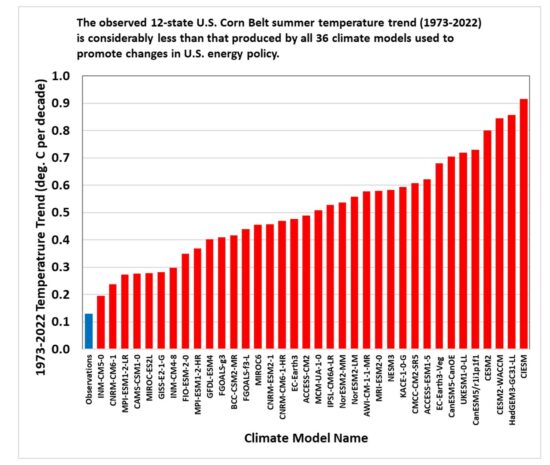Notifications
ALL BUSINESS
COMIDA
DIRECTORIES
ENTERTAINMENT
FINER THINGS
HEALTH
MARKETPLACE
MEMBER's ONLY
MONEY MATTER$
MOTIVATIONAL
NEWS & WEATHER
TECHNOLOGIA
TV NETWORKS
VIDEOS
VOTE USA 2026/2028
INVESTOR RELATIONS
COMING 2026 / 2027
ALL BUSINESS
COMIDA
DIRECTORIES
ENTERTAINMENT
FINER THINGS
HEALTH
MARKETPLACE
MEMBER's ONLY
MONEY MATTER$
MOTIVATIONAL
NEWS & WEATHER
TECHNOLOGIA
TV NETWORKS
VIDEOS
VOTE USA 2026/2028
INVESTOR RELATIONS
COMING 2026 / 2027
About Me
 Latinos Media
Latinos Media Latinos Media provides all types of news feeds on a daily basis to our Members
Posted by - Latinos Media -
on - June 18, 2023 -
Filed in - Weather -
-
0.9K Views - 0 Comments - 0 Likes - 0 Reviews

For the last decade I’ve been providing long-range U.S. Corn Belt forecasts to a company that monitors and forecasts global grain production and market forces. My continuing theme has been, “don’t believe gloom and doom forecasts for the future of the U.S. Corn Belt”.
The climate models relied upon by the United Nations Intergovernmental Panel on Climate Change (IPCC) are known to overestimate warming compared to observations. Depending upon the region (global? U.S.?), temperature metric (surface? deep ocean? lower atmosphere?) and time period (last 150 years? last 50 years?) the average model over-estimate of warming can be either large or small.
But nowhere is it more dramatic than in the U.S. Corn Belt during the growing season (June, July, August).
The following plot shows the 50-year area-averaged temperature trend during 1973-2022 for the 12-state corn belt as observed with the official NOAA homogenized surface temperature product (blue bar) versus the same metric from 36 CMIP6 climate models (red bars, SSP245 emissions scenario, output here).

This kind of sanity check is needed because efforts to change U.S. energy policy are based upon climate model predictions, which are often wildly out of line with observed history. This is why environmentalists emphasize models (which can show dramatic change) over actual observations (which are usually unremarkable).
The post Epic Fail in Americaâ€\u2122s Heartland: Climate Models Greatly Overestimate Corn Belt Warming first appeared on Roy Spencer, PhD..